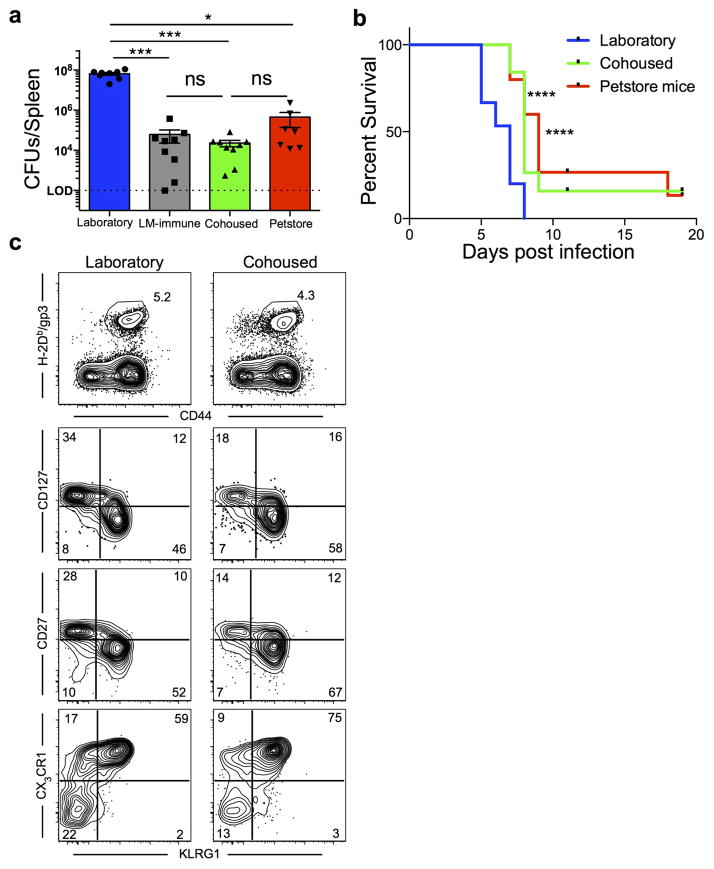Extended data figure 4.
Environment altered antimicrobial resistance and CD8 T cell differentiation. Laboratory mice were co-housed with petstore mice as described in figure 3. a) Bacterial load in the spleen 3 days post-challenge with 8.5 × 104 CFU of Listeria monocytogenes (LM) among laboratory (n=8), LM-immune (n=9), cohoused (n=9) and petstore mice (n=9) among 2 independent experiments. b) Survival of laboratory mice (n=15), cohoused mice (n=19) and petstore mice (n=15) after challenge with 106 Plasmodium berghei ANKA parasitized RBCs among 2 independent experiments. c) Laboratory (n=9) and cohoused (n=8) mice were infected with LCMV. Four weeks later, LCMV-specific CD8 T cells (identified with H-2Db/gp33 MHC I tetramers) were evaluated for expression of the indicated markers. Top row, gated on live CD8α+ T cells. Bottom 3 rows, gated on live CD8α+ H-2Db-gp33+ T cells. Significance was determined using Kruskal-wallis (ANOVA) test (in a) and log-rank (Mantel-Cox) test (in b). * p<0.05, *** p<0.001, **** p<0.0001. Bars indicate mean ± S.E.M.

